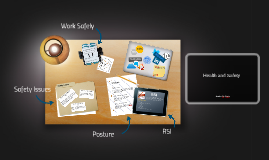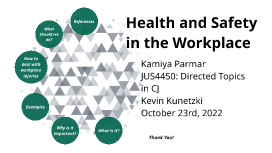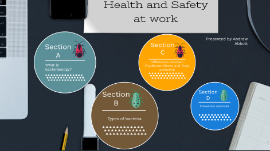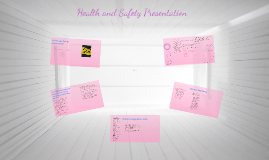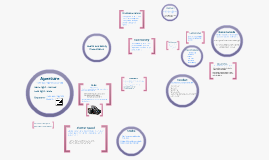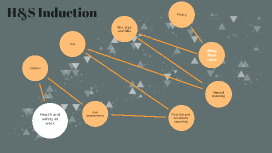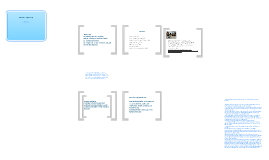health and safety presentation
Transcript: H&S Induction Health and Safety at work Order (NI) 1978 Health and safety at work Employers duties A safe system of work A safe place of work Safe equipment, plant and machinery Safe and competent people working alongside you, because employers are also liable for the actions of their staff and managers Informing workers fully about all potential hazards associated with any work process, chemical substance or activity, including providing instruction, training and supervision Appointing a competent person responsible for health and safety ,competent persons, such as a head of health and safety, oversee day-to-day safety management, oversee safety inspections, and liaise with staff safety reps Consulting with workplace safety representatives and attending a workplace safety committee if two or more safety reps request one Providing adequate facilities for staff welfare at work other duties Duties on you (The Employee) take reasonable care of the health and safety of themselves and of others who may be affected by what they do or do not do cooperate with instructions from the employer on health and safety matters not misuse any equipment that is provided for safety purposes (eg fire extinguishers or safety goggles) Control of Substances Hazardous to Health Regulations (COSHH) COSHH COSHH covers substances that are hazardous to health. Substances can take many forms and include: chemicals products containing chemicals fumes dusts vapors mists nanotechnology gases and asphyxiating gases and biological agents (germs). If the packaging has any of the hazard symbols then it is classed as a hazardous substance. germs that cause diseases such as leptospirosis or legionnaires disease and germs used in laboratories. COSHH does not cover lead,asbestos or radioactive substances because these have their own specific regulations symbols and what they mean Safety Data Sheets Safety data sheets provide information on chemical products that help users of those chemicals to make a risk assessment. They describe the hazards the chemical presents, and give information on handling, storage and emergency measures in case of accident. By law suppliers of chemicals must provide an up to date safety data sheet if a substance is dangerous for supply. COSHH assessments COSHH Assessments Coshh assessments are risk assessments drawn up based on hazardous material You should Gather information about the hazardous properties of the substances, the work, and the working practices (or find out what the problems are) and a copy of the Safety data sheet How chemicals enter your body? In order for a chemical to harm a person's health, it must first come into contact or enter the body, and it must have some biological effect on the body. There are four major routes by which a chemical may enter the body: Inhalation (breathing) Skin (or eye) contact Swallowing (ingestion or eating) Injection How they enter the body and what precautions you can take Management of Health and Safety at Work Regulations (Northern Ireland) 2000 Risk assessments Also known as the 'Management Regs', these came into effect in 1993. The main duty placed on employers by the Management of Health and Safety at Work Regulations is to undertake risk assessments to identify potential hazards to employee health and safety and anyone who may be affected by their work activity. Employers with five or more employees must record any significant findings. The Health and Safety (First-Aid) Regulations 1981 First Aid and Accidents reporting Employers are legally required to arrange for the immediate care of any staff who have an accident or become ill while they are at work. Employers must: assess your first aid needs based on the hazards and risks involved in your workplace provide appropriate equipment and enough trained first aiders to help injured or ill staff. Accidents Accidents All accidents, near misses and dangerous occurrences that involve, or may be attributed, to an Whale employee, contractor, must be reported and accident reports completed for site. Accidents must be recorded in the Accident Book provided. Ensure you know: Who the First Aiders are Where the First Aid boxes are Where the Accident Book is kept Certain accidents and dangerous occurrences have to be reported to the Health & Safety Executive under the Reporting of Injuries, Diseases and Dangerous Occurrences Regulations (RIDDOR). Fire Each employer shall ensure, so far as is reasonably practicable, the safety of his employees in respect of harm caused by fire in the workplace. A reasonable person will be nominated in each business and as the responsible person they must carry out and regularly review a fire risk assessment of the premises. This will identify what is needed to prevent fire and keep people safe. Employers must keep a written record of your fire risk assessment if the business has 5 or more employees and this must be reviewed periodically as a minimum The Fire and Rescue Services (Northern This






